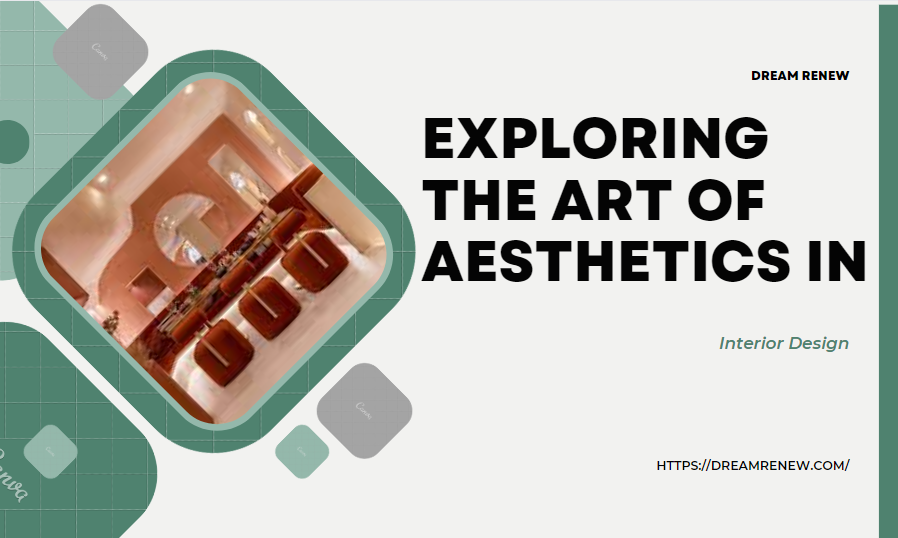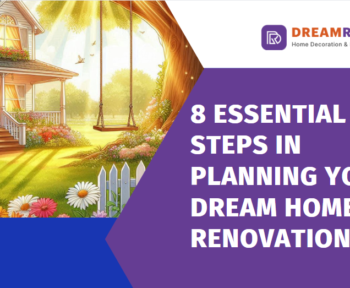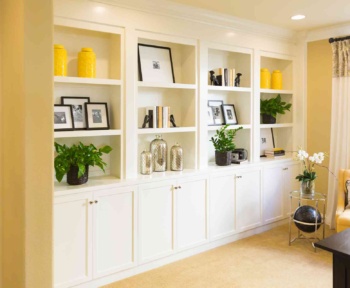When you step into a beautifully designed room, you can immediately sense the harmony, balance, and pleasing visual appeal. This magic is the result of skillfully incorporating aesthetics into interior design. In this post, we will delve deep into the world of aesthetics in interior design, uncovering the three essential elements, the importance of finding your personal design aesthetic, and the most popular interior design styles.
What are Aesthetics in Interior Design?
Aesthetics in interior design refers to the deliberate selection and arrangement of elements to create an aesthetically pleasing and functional space. It’s about making the ordinary extraordinary, turning a house into a home, and captivating anyone who enters.
A well-designed interior isn’t just about selecting the right furniture or color scheme. It’s about creating a cohesive, harmonious space where every element works together to produce a specific atmosphere and impact. Aesthetic choices reflect the homeowner’s personality, lifestyle, and vision for their living space.
The Three Elements of Aesthetics
Aesthetics are composed of three key elements: color, texture, and balance.
- Color: Color is a powerful tool in interior design. It sets the mood of a space, influences emotions, and can make a room feel cozy or expansive. Warm colors like reds and oranges create a sense of energy, while cooler tones like blues and greens promote relaxation.
- Texture: Texture adds depth and character to a room. Think of the difference between a smooth, glossy surface and a rough, textured one. Combining various textures, such as smooth glass, soft fabrics, and rough wood, can create a more dynamic and interesting space.
- Balance: Balance ensures visual harmony in a room. It’s the art of distributing elements in a space so that no one area feels too heavy or empty. Achieving balance can be done through symmetry, asymmetry, or radial balance, depending on your design goals.
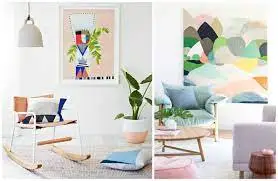
Aesthetics of a Home
Your home should be an extension of yourself, a place where your personality and style shine through. Aesthetics play a crucial role in transforming a living space into a comfortable, inviting, and emotionally satisfying environment.
The aesthetics of a home extend beyond just the individual rooms. They encompass the overall ambiance, architectural elements, and the way various spaces flow and connect. Your home’s aesthetics create a narrative and atmosphere that should resonate with you and your family.
Finding Your Interior Design Aesthetic
Discovering your unique design aesthetic can be an exciting journey. Begin by examining your personal tastes, interests, and lifestyle. Are you drawn to minimalism, maximalism, or perhaps a fusion of styles? Allow your preferences to guide your choices.
Finding your design aesthetic isn’t about adhering to rigid rules; it’s about expressing yourself. Your style might evolve over time, and that’s perfectly normal. Embrace the opportunity to create a space that reflects your current interests and personality.
What Do Aesthetic Rooms Look Like?
Aesthetic rooms can take on various forms depending on the chosen style. For instance, minimalist rooms are characterized by clean lines, neutral colors, and simplicity. On the other hand, bohemian spaces embrace a more eclectic and colorful vibe. Let’s explore some of these popular interior design styles:
- Minimalism: Minimalist design embraces the concept of “less is more.” It focuses on clean lines, simplicity, and a clutter-free environment. Neutral colors and a minimalist approach to furniture and decor create an uncluttered and serene living space.
- Scandinavian: Scandinavian design emphasizes functionality and comfort. It often features light, neutral colors, natural materials, and an abundance of natural light. The goal is to create cozy and inviting spaces that are also highly practical.
- Bohemian: Bohemian style is all about mixing colors, patterns, and textures. It’s a free-spirited, eclectic look that draws inspiration from around the world. Think vibrant textiles, layered rugs, and an overall sense of creativity and self-expression.
- Industrial: Industrial design celebrates raw materials, often with an urban and slightly rugged aesthetic. Exposed brick, metal accents, and open spaces are common features of industrial interiors.
These styles represent just a fraction of the possibilities in interior design, and they can be mixed and matched to create a unique and personalized look.
How to Identify Your Aesthetic
Recognizing your design aesthetic may take some introspection. It’s about understanding what resonates with you and what makes you feel at ease. Your aesthetic is a reflection of your unique personality and taste.
Start by exploring design magazines, websites, and social media platforms to identify spaces that appeal to you. Take note of the colors, textures, and arrangements that draw you in. You can also create a vision board or Pinterest board with your favorite design inspirations. Over time, patterns will emerge, and you’ll begin to see your preferred aesthetic taking shape.
The Most Popular Interior Design Styles
Today, there is an array of interior design styles to choose from. Scandinavian design embodies simplicity and functionality, while industrial design celebrates raw materials and urban vibes. We’ll provide a snapshot of some of the most popular styles and their defining characteristics.
- Scandinavian: Originating from the Nordic countries, Scandinavian design focuses on minimalism, functionality, and the use of natural materials. It often features a neutral color palette, clean lines, and a strong connection to nature.
- Industrial: Industrial design draws inspiration from factories and warehouses. It features raw materials like exposed brick, steel, and concrete. The style often incorporates open spaces, high ceilings, and a sense of urban chic.
- Bohemian: Bohemian design is characterized by its eclectic and colorful nature. It embraces a “more is more” philosophy, combining patterns, textures, and elements from various cultures. It’s a style that encourages self-expression and individuality.
- Minimalism: Minimalist design promotes simplicity and the elimination of excess. It often uses a neutral color palette, clean lines, and a focus on essential items. The goal is to create a serene, uncluttered environment.
- Traditional: Traditional design is rooted in classic, timeless elements. It often includes rich, dark woods, ornate furnishings, and a sense of elegance. It’s a style that exudes comfort and familiarity.
- Contemporary: Contemporary design is characterized by its emphasis on the “now.” It often incorporates cutting-edge materials, clean lines, and a focus on open spaces. It’s a style that’s ever-evolving and reflects current design trends.
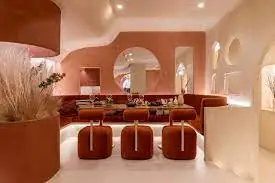
The Importance of Aesthetics in Interior Design
Aesthetics are not merely about making your space look good; they are about making it feel right. Well-designed interiors have a positive impact on our well-being, fostering a sense of comfort and tranquility.
When aesthetics are carefully considered in interior design, the result is a space that not only functions well but also uplifts your mood and improves your quality of life. Whether it’s the choice of calming colors in a bedroom or the use of natural light in a living room, aesthetics play a significant role in creating spaces that make you feel at home.
Exploring Different Interior Design Styles
Let’s dive deeper into various interior design styles, their origins, and what sets them apart. Each style comes with its own aesthetic, allowing you to pick the one that resonates most with you.
Exploring different styles can be an inspiring journey, helping you identify the one that truly speaks to your personality and preferences. Keep in mind that while these styles provide a framework, you can always infuse them with your unique touches to create a space that’s all your own.
The Allure of Minimalist Interior Design
Minimalism is a style that’s all about less being more. It’s about decluttering, focusing on essential elements, and creating a serene and uncluttered living space.
Minimalism, in particular, has gained popularity in recent years for its ability to create calm and tranquility in a chaotic world. Its appeal lies in its simplicity, where every item has a purpose and space is left uncluttered for the mind to breathe.
Aesthetics in Architecture
The importance of aesthetics doesn’t stop at interior design; it extends to architecture. Architectural aesthetics influence the look and feel of structures, shaping our urban landscapes and environments.
Just as interior aesthetics enhance your personal living spaces, architectural aesthetics contribute to the character and identity of entire neighborhoods and cities. The design of buildings can evoke emotions, inspire creativity, and impact the way we experience our surroundings.
Conclusion
In the world of interior design, aesthetics are the bridge between function and beauty. By understanding the principles of aesthetics and embracing your personal design style, you can create a living space that is not just visually pleasing but emotionally satisfying. So, embark on your journey to transform your living space into a true reflection of yourself through the power of aesthetics in interior design.

